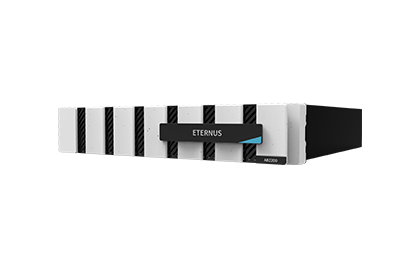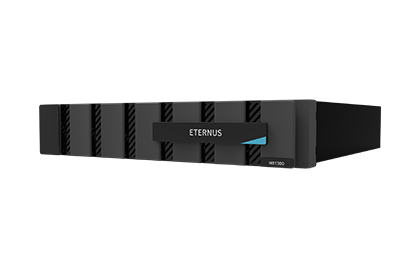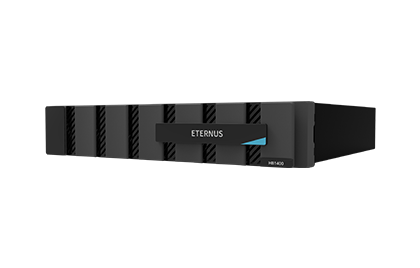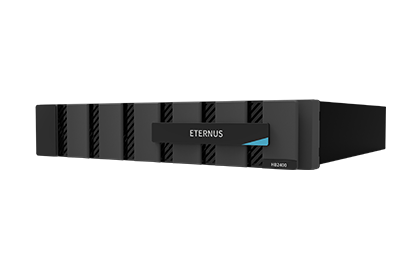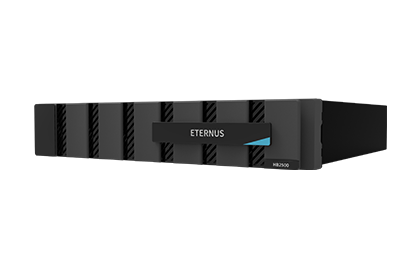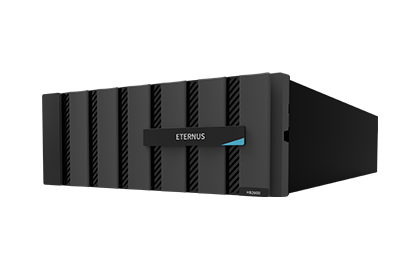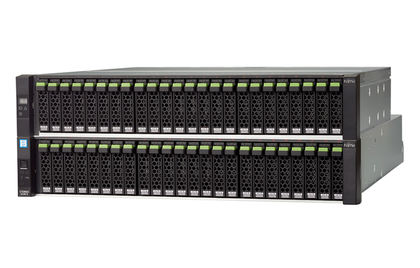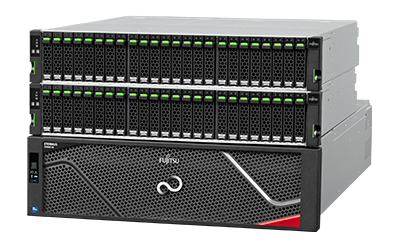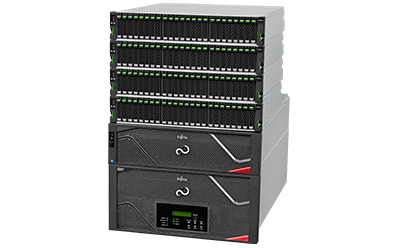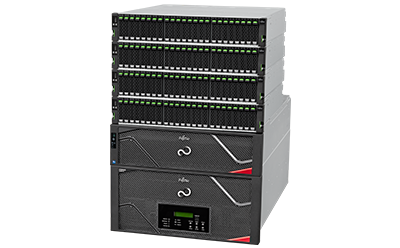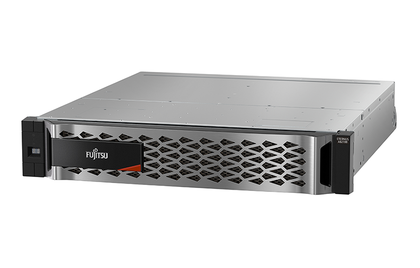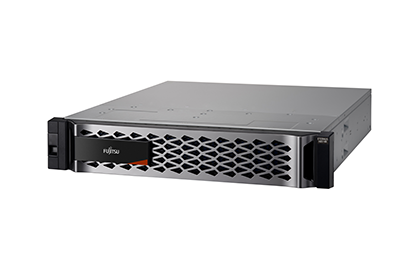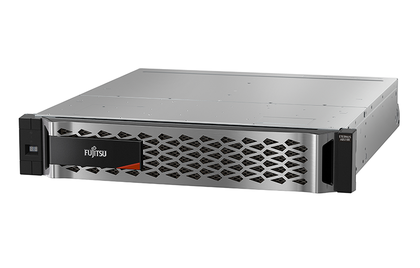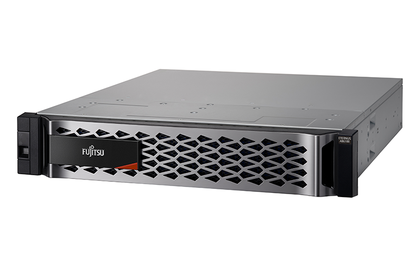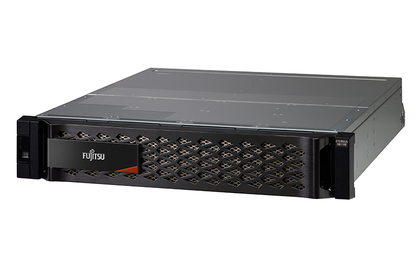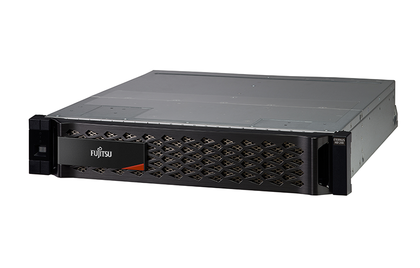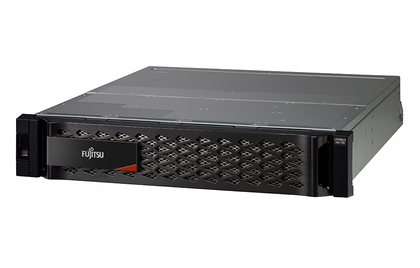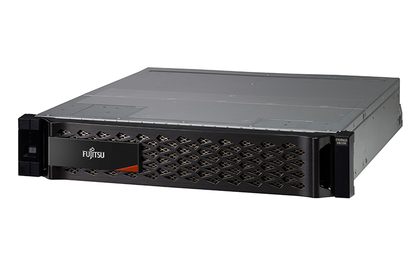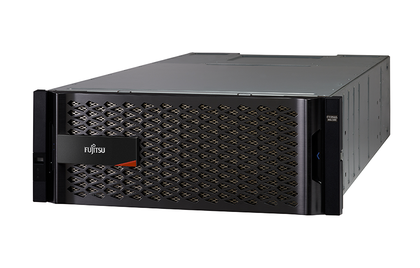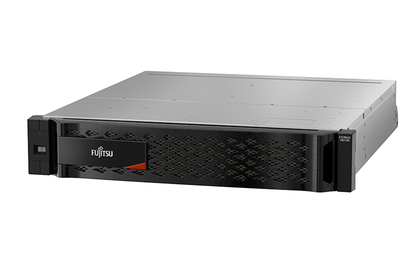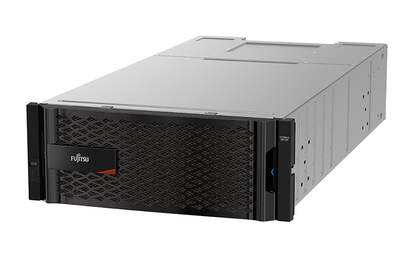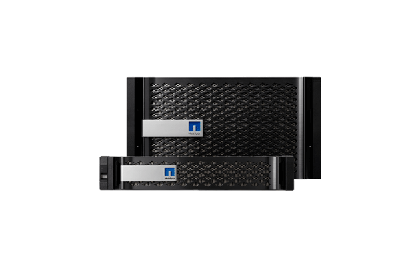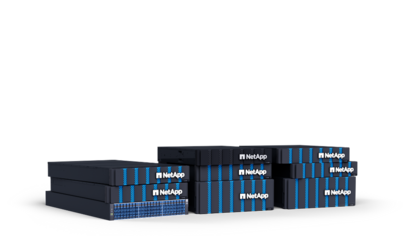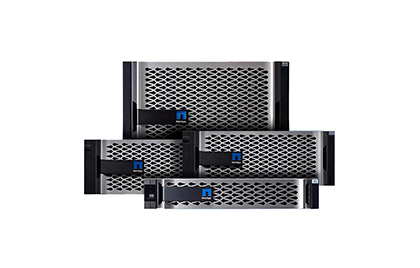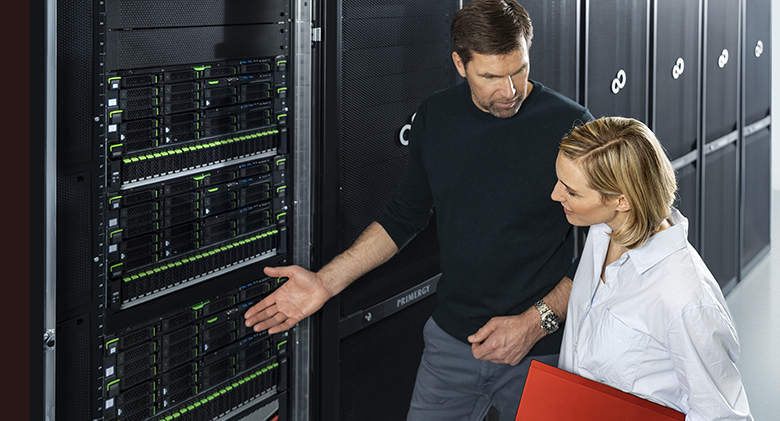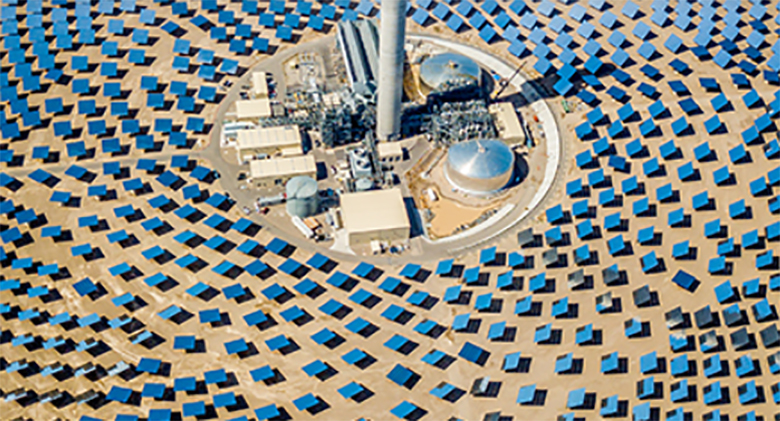Go beyond with primary storage

Primary Storage-Lösungen
Jenseits aller Grenzen mit Datenspeicher der nächsten Generation
Innerhalb von Unternehmen hat es eine Datenexplosion gegeben. Und mit dem exponentiellen Datenwachstum geht das Erfordernis für neue Storage-Systeme und -Lösungen mit minimaler Latenz, einem unterbrechungsfreien Zugriff auf Daten und intelligenten Effizienzfunktionen einher, welche die richtigen Daten zur rechten Zeit verfügbar machen. Die Datenverfügbarkeit und -verwaltbarkeit sind die Unterscheidungsmerkmale von heute. Um also in von Wettbewerb geprägten Märkten anderen gegenüber stets einen Schritt voraus zu sein, sind fundamentale Veränderungen in der Art und Weise erforderlich, wie Daten gespeichert und verwaltet werden. Ihr geschäftlicher Erfolg hängt von Ihrer Fähigkeit ab, Ihre Daten zu erfassen, speichern, verwalten, konsolidieren und zu Geld zu machen. Um dies zu erreichen, müssen Sie beim Storage die richtige Wahl treffen. Für viele Unternehmen bedeutet dies einen Wechsel der Betrachtungsweise von „so haben wir das schon immer gemacht“ zu „es gibt keine Einheitslösung“.
Die richtige Wahl beim Storage treffen – Traditionell, Hyperconverged oder SDS?
Das Fujitsu Primary Storage-Portfolio basiert auf preisgekrönten Leistungsarchitekturen,
die kürzeste Reaktionszeiten unabhängig von der Workload garantieren. Mit unserem Portfolio an
Datenspeicherlösungen, bieten wir eine zentrale Anlaufstelle für alle Datenspeichererfordernisse, von traditionellem Speicher, über
Hyperconverged Infrastructures (HCI), bis hin zu softwaredefiniertem Storage (SDS).

Traditioneller Storage
Traditionelle RAID-Storage-Lösungen bieten eine vorhersehbare Leistung für Unternehmen, die einen zuverlässigen Speicherbetrieb für Altanwendungen und -infrastrukturen, dedizierte Anwendungen und Datenbanken/OLTP benötigen. Unsere Lösungen unterstützen eine Reihe von Speichertechnologien - Hybrid, All-Flash und NVMe All-Flash - die sich problemlos kombinieren lassen, ganz im Einklang mit den unterschiedlichen Datenspeichererfordernissen. Integrierte Datensicherungsfunktionen beinhalten eine reibungslose Migration, Replikation und ein transparentes Failover und gewährleisten Business Continuity.

Softwaredefinierter Storage (SDS)
SDS wird in der Regel als Scale-Out- oder Hyperscale-System angeboten - um die Kapazität und Leistung zu erhöhen, fügen Sie dem gesamten Storage-Pool des Systems einfach weitere Knoten hinzu. Die Platzierung der Daten und der Managementsoftware des Systems ist auf alle Knoten verteilt. Das vereinfacht die Skalierung ganz erheblich und bietet die Flexibilität, die Kapazität nach Bedarf auszubauen, ohne die Leistung zu beeinträchtigen. Dies macht eine Kapazitätsplanung und -prognose überflüssig - und theoretisch gibt es keine Kapazitätsgrenze. Das SDS-Konzept eignet sich auch bestens für sich schnell verändernde Ökosysteme mit neuartigen Workloads und Edge-Core-Cloud-Umgebungen.

Hyperkonvergente Infrastruktur (HCI)
Die hyperkonvergenten Infrastrukturlösungen von Fujitsu kombinieren mehrere Elemente - Computing-, Speicher- und Netzwerkgeräte - um eine harmonische, hochverfügbare Infrastrukturlösung für Unternehmen zu bilden, die hinsichtlich ihrer zukünftigen Speicher- und Computing-Erfordernisse unsicher sind.
Sehen Sie sich unsere Datenspeicherlösungen an
Product type
NVMe support
Raw capacity
No. of drives
System memory
| Storage ETERNUS AB2200 | Storage ETERNUS HB1300 | Storage ETERNUS HB1400 | Storage ETERNUS HB2400 | Storage ETERNUS HB2500 | Storage ETERNUS HB2600 | Storage ETERNUS DX200 S5 | Storage ETERNUS DX600 S6 | Storage ETERNUS DX8900 S6 | Storage ETERNUS DX900 S6 | Storage ETERNUS AB2100 | Storage ETERNUS AB3100 | Storage ETERNUS AB5100 | Storage ETERNUS AB6100 | Storage ETERNUS HB1100 | Storage ETERNUS HB1200 | Storage ETERNUS HB2100 | Storage ETERNUS HB2200 | Storage ETERNUS HB2300 | Storage ETERNUS HB5100 | Storage ETERNUS HB5200 | NetApp FAS Storage Arrays | NetApp All-Flash SAN Arrays | NetApp All-Flash-FAS | NetApp StorageGRID-Datenspeicher | Qumulo Datenspeicher | |
|---|---|---|---|---|---|---|---|---|---|---|---|---|---|---|---|---|---|---|---|---|---|---|---|---|---|---|
| Host-Schnittstellen |
FC (8, 16, 32 Gbit/s) iSCSI (10, 25 Gbit/s, 10GBASE-T) SAS (12 Gbit/s) |
FC (8, 16, 32 Gbit/s) iSCSI (10 Gbit/s, 10 GBASE-T) |
FC (8, 16, 32 Gbit/s) iSCSI (10, 25 Gbit/s, 10GBASE-T) |
FC (8, 16, 32 Gbit/s) iSCSI (10, 25 Gbit/s, 10GBASE-T) SAS (12 Gbit/s) |
FC (8, 16, 32 Gbit/s) iSCSI (10, 25 Gbit/s, 10GBASE-T) SAS (12 Gbit/s) |
FC (8, 16, 32 Gbit/s) iSCSI (10, 25 Gbit/s, 10GBASE-T) SAS (12 Gbit/s) |
Fibre Channel (16 Gbit/s, 32 Gbit/s) iSCSI (10 Gbit/s [10GBase-SR, 10GBase-CR, 10GBase-T], 1 Gbit/s) SAS (12 Gbit/s) Ethernet (10 Gbit/s, 1 Gbit/s) |
Fibre Channel (64 Gbit/s, 32 Gbit/s, 16 Gbit/s) iSCSI (10 Gbit/s [10G BASE-SR, 10G BASE-CR]) |
Fibre Channel (64 Gbit/s, 32 Gbit/s, 16 Gbit/s) iSCSI (10 Gbit/s [10 GBASE-SR], [10 GBASE-CR]) |
Fibre Channel (64 Gbit/s, 32 Gbit/s, 16 Gbit/s) iSCSI (10 Gbit/s [10 GBASE-SR], [10 GBASE-CR]) |
FC (4, 8, 16, 32 Gbit/s) iSCSI (10, 25 Gbit/s, 10GBASE-T) SAS (12 Gbit/s) |
FC (32 Gbit/s) NVMe over FC (32 Gbit/s) NVMe over InfiniBand (100 Gbit/s) NVMe over RoCE (100 Gbit/s) iSCSI (10, 25 Gbit/s) |
FC (4, 8, 16, 32 Gbit/s) NVMe over FC (32 Gbit/s) iSCSI (10, 25 Gbit/s) IB (100 Gbit/s) NVMe over InfiniBand (100 Gbit/s) NVMe over RoCE (100 Gbit/s) SAS (12 Gbit/s) |
FC (8, 16, 32 Gbit/s) NVMe over FC (32 Gbit/s) NVMe over InfiniBand (100 Gbit/s) NVMe over RoCE (100 Gbit/s) iSCSI (10, 25 Gbit/s) |
FC (4, 8, 16 Gbit/s) iSCSI (10 Gbit/s, 10 GBASE-T) |
FC (4, 8, 16 Gbit/s) iSCSI (10 Gbit/s, 10 GBASE-T) |
FC (4, 8, 16, 32 Gbit/s) iSCSI (10, 25 Gbit/s, 10GBASE-T) SAS (12 Gbit/s) |
FC (4, 8, 16, 32 Gbit/s) iSCSI (10, 25 Gbit/s, 10GBASE-T) SAS (12 Gbit/s) |
FC (4, 8, 16, 32 Gbit/s) iSCSI (10, 25 Gbit/s, 10GBASE-T) SAS (12 Gbit/s) |
FC (4, 8, 16, 32 Gbit/s) NVMe over FC (32 Gbit/s) iSCSI (10, 25 Gbit/s) IB (100 Gbit/s) NVMe over InfiniBand (100 Gbit/s) NVMe over RoCE (100 Gbit/s) SAS (12 Gbit/s) |
FC (4, 8, 16, 32 Gbit/s) NVMe over FC (32 Gbit/s) iSCSI (10, 25 Gbit/s) IB (100 Gbit/s) NVMe over InfiniBand (100 Gbit/s) NVMe over Ethernet (100 Gbit/s) SAS (12 Gbit/s) |
- | - | - | Ethernet (10 GbE / 25 GbE / 40 GbE / 100 GbE) | - |
| Maximale Plattenlaufwerke | 120 | 24 | 48 | 252 | 264 | 300 | 264 | 960 | 3.072 | 2.304 | 96 | - | 444 | - | 24 | 48 | 192 | 168 | - | 444 | - | - | - | - | - | - |
| Maximale Speicherkapazität | 1.836 TB | 528 TB | 194,4 TB | 5.544 TB | 5.647,2 TB | 6.600 TB | - | - | - | - | 1.468 TB | 5.647,2 TB | 1.836 TB | 9.607,2 TB | 528 TB | 194,4 TB | 4.224 TB | 3.374,4 TB | 4.224 TB | 9.607,2 TB | 10.560 TB | - | - | 702.700 TB | 960 TB | - |
| Anz. der Host-Schnittstellen |
4 Ports [iSCSI (25 Gbit/s)] 8 Ports [FC (32 Gbit/s)] 8 Ports [iSCSI (10GBase-T)] 8 Port [SAS (12 Gbit/s)] |
4 Ports [iSCSI (25 Gbit/s)] 8 Ports [FC (32 Gbit/s)] 8 Ports [iSCSI (10GBase-T)] |
4 Ports [iSCSI (25 Gbit/s)] 8 Ports [FC (32 Gbit/s)] 8 Ports [iSCSI (10GBase-T)] |
4 Ports [iSCSI (25 Gbit/s)] 8 Ports [FC (32 Gbit/s)] 8 Ports [Ether (10 GBase-T)] 8 Port [SAS (12 Gbit/s)] |
4 Ports [iSCSI (25 Gbit/s)] 8 Ports [FC (32 Gbit/s)] 8 Ports [iSCSI (10GBase-T)] 8 Port [SAS (12 Gbit/s)] |
4 Ports [iSCSI (25 Gbit/s)] 8 Ports [FC (32 Gbit/s)] 8 Ports [iSCSI (10GBase-T)] 8 Port [SAS (12 Gbit/s)] |
4-16 Ports [FC (16 Gbit/s)], 8/16 Ports [Ethernet (1 Gbit/s)], 4/8 Ports [FC (32 Gbit/s), iSCSI (10 Gbit/s, 1 Gbit/s), SAS (12 Gbit/s), Ethernet (10 Gbit/s)] | 4–32 Ports [FC (64 Gbit/s, 32 Gbit/s, 16 Gbit/s)], 4–16 Ports [iSCSI (10 Gbit/s)] |
4 - 16 Ports [iSCSI, FCoE, Ethernet (10 Gbit/s], 4 - 32 Ports [FC], 8 - 32 Ports [Ethernet (1 Gbit/s)] 4-128 Ports [iSCSI (10 Gbit/s)] |
4–64 Ports [FC (64 Gbit/s, 32 Gbit/s, 16 Gbit/s)], 4–32 Ports [iSCSI (10 Gbit/s)] |
12 Ports [FC (4, 8, 16 Gbit/s)] 8 Ports [FC (32 Gbit/s)] 12 Ports [iSCSI (10 Gbit/s)] 8 Ports [iSCSI (10GBase-T)] 8 Ports [iSCSI (25 Gbit/s)] 8 Port [SAS (12 Gbit/s)] |
- |
12 Ports [FC (4, 8, 16 Gbit/s)] 8 Ports [FC (32 Gbit/s)] 8 Ports [NVMe over FC (32 Gbit/s)] 12 Ports [iSCSI (10 Gbit/s)] 8 Ports [iSCSI (25 Gbit/s)] 4 Ports [IB (100 Gbit/s)] 4 Ports [NVMe over InfiniBand (100 Gbit/s)] 4 Ports [NVMe over RoCE (100 Gbit/s)] 8 Port [SAS (12 Gbit/s)] |
- |
8 Ports [FC (16 Gbit/s)] 8 Ports [iSCSI (10 Gbit/s)] 4 Ports [iSCSI (10 GBase-T)] |
8 Ports [FC (16 Gbit/s)] 8 Ports [iSCSI (10 Gbit/s)] 4 Ports [iSCSI (10 GBase-T)] |
12 Ports [FC (4, 8, 16 Gbit/s)] 8 Ports [FC (32 Gbit/s)] 12 Ports [iSCSI (10 Gbit/s)] 8 Ports [iSCSI (10GBase-T)] 8 Ports [iSCSI (25 Gbit/s)] 8 Port [SAS (12 Gbit/s)] |
12 Ports [FC (4, 8, 16 Gbit/s)] 8 Ports [FC (32 Gbit/s)] 12 Ports [iSCSI (10 Gbit/s)] 8 Ports [iSCSI (10GBase-T)] 8 Ports [iSCSI (25 Gbit/s)] 8 Port [SAS (12 Gbit/s)] |
- |
12 Ports [FC (4, 8, 16 Gbit/s)] 8 Ports [FC (32 Gbit/s)] 8 Ports [NVMe over FC (32 Gbit/s)] 12 Ports [iSCSI (10 Gbit/s)] 8 Ports [iSCSI (25 Gbit/s)] 4 Ports [IB (100 Gbit/s)] 4 Ports [NVMe over InfiniBand (100 Gbit/s)] 4 Ports [NVMe over RoCE (100 Gbit/s)] 8 Port [SAS (12 Gbit/s)] |
- | - | - | - | - | - |
| Max. Anz. der Hosts | 128 | 128 | 128 | 128 | 128 | 128 | 1.024 | 4.096 | 8.192 | 8.192 | 128 | 512 | 512 | 512 | 128 | 128 | 128 | 128 | 128 | 512 | 512 | - | - | - | - | - |
| Unterstützte RAID-Level | 0, 1, 1+0, 3, 5, 6, DDP | 0, 1, 1+0, 3, 5, 6, DDP | 0, 1, 1+0, 3, 5, 6, DDP | 0, 1, 1+0, 3, 5, 6, DDP | 0, 1, 1+0, 3, 5, 6, DDP | 0, 1, 1+0, 3, 5, 6, DDP | 0, 1, 1+0, 5, 5+0, 6 | 0, 1, 1+0, 5, 5+0, 6 | 0, 1, 1+0, 5, 5+0, 6 | 0, 1, 1+0, 5, 5+0, 6 | 0, 1, 1+0, 3, 5, 6, DDP | 0, 1, 1+0, 3, 5, 6, DDP | 0, 1, 1+0, 3, 5, 6, DDP | 0, 1, 1+0, 3, 5, 6, DDP | 0, 1, 1+0, 3, 5, 6, DDP | 0, 1, 1+0, 3, 5, 6, DDP | 0, 1, 1+0, 3, 5, 6, DDP | 0, 1, 1+0, 3, 5, 6, DDP | 0, 1, 1+0, 3, 5, 6, DDP | 0, 1, 1+0, 3, 5, 6, DDP | 0, 1, 1+0, 3, 5, 6, DDP | - | - | - | - | - |
| Laufwerkschnittstelle | 12G SAS (MiniSAS HD) | 12G SAS (MiniSAS HD) | 12G SAS (MiniSAS HD) | 12G SAS (MiniSAS HD) | 12G SAS (MiniSAS HD) | 12G SAS (MiniSAS HD) | Serial Attached SCSI (12 Gbit/s) | NVMe (16 Gbit/s), SAS (12 Gbit/s) | NVMe (16 Gbit/s), SAS (12 Gbit/s) | NVMe (16 Gbit/s), SAS (12 Gbit/s) | 12G SAS (MiniSAS HD) | NVMe, SAS | 12G SAS (MiniSAS HD) | NVMe, SAS | 12G SAS (MiniSAS HD) | 12G SAS (MiniSAS HD) | 12G SAS (MiniSAS HD) | 12G SAS (MiniSAS HD) | 12G SAS (MiniSAS HD) | 12G SAS (MiniSAS HD) | 12G SAS (MiniSAS HD) | - | - | - | - | - |
| Thin Provisioning | Ja | Ja | Ja | Ja | Ja | Ja | Ja | Ja | Ja | Ja | Ja | Nein | Ja | - | Ja | Ja | Ja | Ja | Ja | Ja | Ja | - | - | - | - | - |
| Remote-Copy-Funktion | Synchron und asynchron | Asynchron (optional) | Asynchron (optional) | Synchron und asynchron | Synchron und asynchron | Synchron und asynchron | Synchron und asynchron | Synchron und asynchron | Synchron und asynchron | Synchron und asynchron | Synchron und asynchron | - | Synchron und asynchron | - | Asynchron (optional) | Asynchron (optional) | Synchron und asynchron | Synchron und asynchron | Synchron und asynchron | Synchron und asynchron | Synchron und asynchron | - | - | - | - | - |
| Max. Anz. der SSDs | - | 8 | 8 | 120 | 120 | 120 | unbegrenzt | unbegrenzt | unbegrenzt | unbegrenzt | - | - | - | - | 8 | 8 | 120 | 120 | 120 | 120 | 120 | - | - | 5760 | - | - |
| Typ | - | - | - | - | - | - | Einheitliches Plattenspeichersystem für kleine und mittelständische Unternehmen | Blockplattenspeichersystem für kleine und mittelständische Unternehmen | Disk Storage-System der High-End-Klasse für Großunternehmen | Blockplattenspeichersystem für kleine und mittelständische Unternehmen | - | - | - | - | - | - | - | - | - | - | - | - | - | - | - | - |
| Latenz | - | - | - | - | - | - | 140 µs (Lesen), 60 µs (Schreiben) | Weniger als 1 ms | Weniger als 1 ms | Weniger als 1 ms | - | - | - | - | - | - | - | - | - | - | - | - | - | - | - | - |
| Sequenzielle Zugriffsleistung | - | - | - | - | - | - |
11.000 MB/s (128 KB Lesen) 4.400 MB/s (128 KB Schreiben) |
44.000 MB/s (128 KB Read) 22.000 MB/s (128 KB Write) | 196.000 MB/s (128 KB Lesen), 72.000 MB/s (128 KB Schreiben) | 88.000 MB/s (128 KB Read) 44.000 MB/s (128 KB Write) | - | - | - | - | - | - | - | - | - | - | - | - | - | - | - | - |
| Wahlfreie Zugriffsleistung | - | - | - | - | - | - |
530.000 IOPS (8 KB Lesen) 230.000 IOPS (8 KB Schreiben) |
950.000 IOPS (8 KB Read) 410.000 IOPS (8 KB Write) | 3.500.000 IOPS (8 KB Lesen), 2.200.000 IOPS (8 KB Schreiben) | 1.800.000 IOPS (8 KB Read) 960.000 IOPS (8 KB Write) | - | - | - | - | - | - | - | - | - | - | - | - | - | - | - | - |
| Maximale Speicherkapazität der HDD | - | - | - | - | - | - | 4.752 TB | 8.424 TB | 26 PB | 20.304 TB | - | - | - | - | - | - | - | - | 3.456 TB | - | 8.640 TB | - | - | - | - | - |
| Maximale Speicherkapazität der SSD | - | - | - | - | - | - | 8.110 TB | 29.123 TB | 91 PB | 70.042 TB | - | 1.836,0 TB | - | - | - | - | - | - | 1.192,8 TB | - | 1.836 TB | - | - | - | - | - |
| Automatisches Speicher-Tiering | - | - | - | - | - | - | Ja | Ja | Ja | Ja | - | - | - | - | - | - | - | - | - | - | - | - | - | - | - | - |
| Max. Laufwerke pro HA-Paar | - | - | - | - | - | - | - | - | - | - | - | - | - | - | - | - | - | - | - | - | - | 1.440 | - | - | - | - |
| Max . Bruttokapazität im Cluster | - | - | - | - | - | - | - | - | - | - | - | - | - | - | - | - | - | - | - | - | - | 176000 TB | - | - | - | - |
| Maximale Speicherkapazität (HA-Paar) | - | - | - | - | - | - | - | - | - | - | - | - | - | - | - | - | - | - | - | - | - | 14.700 TB | - | - | - | - |
| Max. scale-out nodes | - | - | - | - | - | - | - | - | - | - | - | - | - | - | - | - | - | - | - | - | - | - | 12 | - | - | - |
| Maximum Storage Capacity | - | - | - | - | - | - | - | - | - | - | - | - | - | - | - | - | - | - | - | - | - | - | 69 PB | - | - | - |
| Max. Scale-out-Knoten | - | - | - | - | - | - | - | - | - | - | - | - | - | - | - | - | - | - | - | - | - | - | - | 24 | - | - |
Einblicke

Broschüre
Die Welt ist datengesteuert und unsere Arbeitsweise verändert sich völlig. In Folge dessen befindet sich jedes Unternehmen in einem fortlaufenden Prozess, in dem sich alle Daten ständig ändern. Genau genommen sind Daten heute und zukünftig noch in viel höherem Maße ein Schlüsselelement, das Unternehmen antreibt.
Vereinfachen Sie Ihre Abläufe mit All-in-One-Speicherlösungen von Fujitsu
Fujitsu ist Ihre zentrale Anlaufstelle für die Bereitstellung umfassender Datenlösungen für verschiedene Anwendungsfälle. Durch Kombination von ETERNUS Storage-Systemen mit Partnerprodukten und unseren Services stellen wir erfolgreich ganzheitliche Speicherlösungen für alle Datenszenarien bereit
